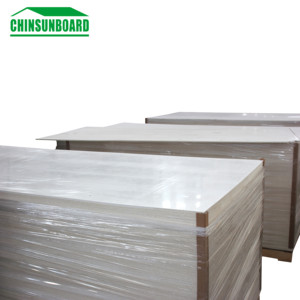
All categories
Featured selections
Trade Assurance
Buyer Central
Help Center
Get the app
Become a supplier

(104 products available)









































Magnesium fire extinguishers are usually suitable for Class D fires. These are fires that involve combustible metals like magnesium, sodium, and potassium. Unlike conventional extinguishers, which focus on cooling or smothering the fire, magnesium extinguishers effectively handle such specific fire risks. One, through the discharge of specialized agents, two, by preventing the fire from re-igniting. Class D fire extinguishers come in different types. They include those equipped with dry powder agents, those directly applicable to the types of metal involved in the fire in question.
The first type of magnesium fire extinguisher is a handheld extinguisher. These contain a small amount of dry powder suitable for extinguishing Class D fires in small volumes. Handheld extinguishers are most appropriate for risks that can be easily controlled, such as in workshops or small storage areas. Their compact size also makes it easy to maneuver in tight spaces.
The second type is the trolley-mounted extinguishers. These contain a larger quantity of dry powder and discharge hoses for more extensive operations. Trolley-mounted extinguishers are best suited for locations with a higher risk of magnesium fires, such as in manufacturing plants dealing with large magnesium blocks or in heavy industrial environments. Their mobility also allows easy relocation depending on changing conditions.
The third type is automatic extinguishing systems. These are potentially most appropriate for spaces where people seldom go or where it's difficult to maneuver manual extinguishers. These systems automatically contain a fire detection and extinguishing agent packaging that releases without human intervention. They are widely used in machinery spaces or other areas where fire hazards exist.
Portable extinguishers are easy to deploy and, therefore, effective in containing small fires before they escalate. Multi-purpose extinguers that include a dry powder suitable for Class D fires are often found in industries that handle magnesium and other reactive metals. This encompasses sectors ranging from aerospace to automotive manufacturing. Fixed extinguishing systems help safeguard continuous operations by providing automated fire protection in high-risk zones.
Magnesium fire extinguishers are crucial within the commercial context. They protect personnel, property, and operations within industries dealing with combustible metals. Their versatile applications improve workplace safety, reduce insurance premiums, and ensure regulatory compliance through the following means.
There are several specifications and technical details for magnesium fire extinguishers. These include their capacity, agent type and discharge method, as well as installation and maintenance requirements.
Choosing the right magnesium fire extinguishers involves several key considerations. One must determine the specific fire risks present in their environment, understand the various types of extinguishers available, ensure proper training and maintenance, and comply with relevant regulations.
Knowing any particular fire risks that may be on one's premises is the first thing that must be done. Considerable industries that deal with magnesium regularly experience a significant risk factor. Therefore, it is best to understand fully which materials will be involved in the combustibles to choose appropriate extinguishers meaning specific for-Class D fires. This is because they alone provide protection against such fires of this kind.
As much as handheld extinguishers are easier to operate, they are only appropriate for small-sized fires. Trolley-mounted extinguishers do offer greater quantities of dry powder that can be within reach. Automatic systems are recommended in areas where people do not adequately access. Multi-purpose extinguers, which contain dry powder suitable for Class D fires and cooling-type fires, are also sometimes needed. These can assist in fighting fires involving liquids, solids, and gases.
In the absence of proper training, any fire equipment installed will be ineffectual. It is important that all personnel are trained on how to operate magnesium extinguishers. They should understand how to identify potential fire risks and the proper procedures for activating any automatic systems. The training should also cover regular maintenance and inspections. This is because maintenance helps one to ensure that all the extinguishers are functioning properly when needed most. This also involves replacing any equipment that has been damaged or worn out.
Certifications from national or local authorities and insurance requirements should also guide the selection process. These regulations usually dictate the minimum standards for fire protection.
A1: Yes, it duly depends on factors like agent type, powder granule size, and discharge range. These key variables impact how effectively they suppress magnesium fires. Quality extinguishers have higher-quality dry powders with smaller granules. Such powders stack easily for better heat absorption and flame smothering. They, therefore, efficiently put off the fire with less effort.
A2: The National Fire Protection Association and Occupational Safety and Health Administration guidelines apply here. Presence, placement, maintenance, and usage of extinquishers are issues addressed by these organizations during firefighting. Because they address the use of Class D extinguishers in industries dealing with hazardous metals, they are important for magnesium fires.
A3: Frequent checks inspect magnesium fire extinguishers for signs of power clumping, leaks, and hardware deterioration. Licensed professionals must perform maintenance like pressure tests and agent replacements. This does not only guarantee the equipment's reliability, but it also helps one stay in conformity with the prescribed fire safety laws and standards.
A4: Inadequate training results in confusion in emergencies, even with all the right equipment. Training on extinguishers' operation and potential Class D fire identification is very important. This helps people to respond effectively. It ensures safety and suppression strategies.
A5: Cost and convenience factors typically penalties in with commercial-grade magnesium fire extinguishers. They are more likely to contain better extinguishing agents with longer ranges. Those commercially available extinguishers will be of higher quality than home improvement stores.